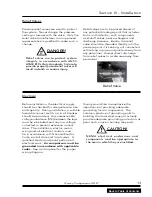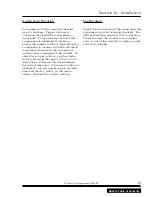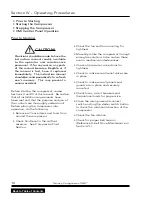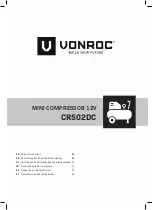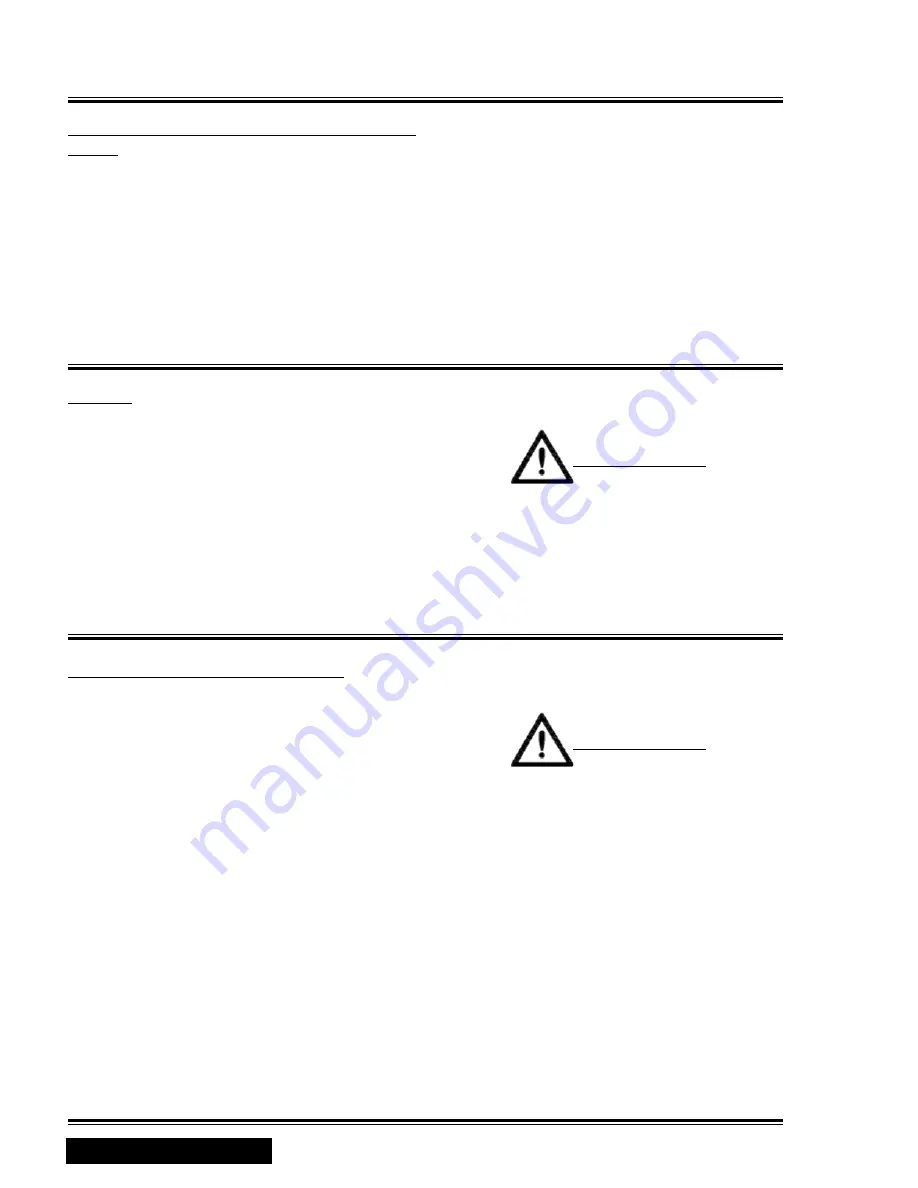
Section III - Installation
Pneumatic Circuit Breakers or Velocity
Fuses
Pneumatic safety devices are designed to
prevent hoses from whipping, which could
result in a serious or fatal accident.
The Occupational Safety and Health Act,
Section 926.303 Paragraph 7 published
in Code of Federal Regulations 29 CFR
920. (revised 07/0/982), states “all
hoses exceeding /2” inside diameter
shall have a safety device at the source of
supply or branch line to reduce pressure in
case of a hose failure.”
Guards
All mechanical action or motion is
hazardous in varying degrees and needs to
be guarded. Guarding shall comply with
OSHA Safety and Health Standards 29 CFR
90.29 in OSHA manual 2206 (revised
/07/978) and any state or local codes.
Warning!
Cabinet panels and drive guards must
be fastened in place before starting
the machine and never removed before
lock out/tag out of the main power
supply.
Manual Vent and Shutoff Valve
Install a manual valve to vent the
compressor and the compressor discharge
line to atmosphere. If the air receiver tank
services a single compressor, the manual
valve can be installed in the receiver.
When a manual shutoff valve (block valve)
is used, a manual valve should be installed
upstream from the valve, and a pressure
relief valve installed upstream from the
manual vent valve. These valves are
to be designed and installed to permit
maintenance to be performed in a safe
manner. Never substitute a check valve for
a manual shutoff valve (block valve) if the
purpose is to isolate the compressor from a
system for servicing.
Warning!
Relieve compressor and system air
pressure by opening the appropriate
manual relief valve prior to servicing.
Failure to relieve all system pressure
could result in death or serious injury
and property damage.
4
Quincy Compressor-QGB
™
Back to Table of Contents














